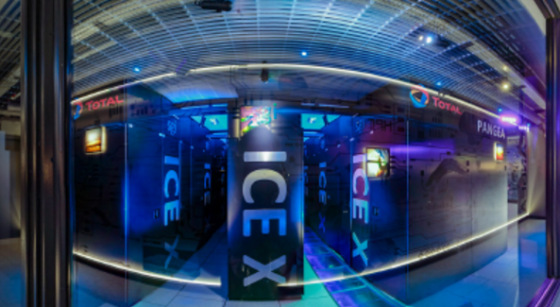No longer synonymous with cutting edge cool, but still relevant in high performance computing.
By Jon Peddie
The recent news that SGI (NASDAQ: SGI), the company once known as Silicon Graphics, will be acquired by Hewlett Packard Enterprise, marks the end of an era. There was a time when SGI was synonymous with cool and cutting edge. It still builds great supercomputers, which is why HPE came calling. But the cachet is just not the same anymore.
The deal is for $275 million, small change compared to recent software industry deals in the billions. Today’s SGI has approximately 1,100 employees and recorded revenue of $533 million in fiscal 2016.

The back story
Silicon Graphics was started in 1981 by Jim Clark, based on an idea for a hardware geometry processor that he presented in his thesis to his advisor, Ivan Sutherland at the University of Utah in 1974, and that he later finalized as an associate professor at Stanford in 1979.
Silicon Graphics, SGI, was the greatest computer graphics company ever, even surpassing his mentor’s company, Evans and Sutherland. SGI was building high-performance servers for graphics in the 1990s but didn’t call them servers. Not until SGI bought the venerable Cray Computer Company (for the astounding sum of $576 million) in 1996 did the word server start to become part of SGI-speak. SGI hit its peak in sales, $3.7 billion, in 1997, and then steadily declined until May 2006, when it filed for Chapter 11 bankruptcy. During that long slide, the company sold Cray to Tera Computer in 2000, and a lot of the server smarts walked out the door.
SGI emerged from bankruptcy in October 2006, and in April 2008 reentered the visualization market with the SGI Virtu range of visualization servers and workstations, which were re-badged systems from Boxx Technologies based on Intel Xeon or AMD Opteron processors and Nvidia Quadro graphics chipsets. It didn’t help, and on April 1, 2009, SGI filed for Chapter 11 again. Sadly, it was not an April Fool’s joke. The company announced that it would sell substantially all of its assets to Rackable Systems for $25 million. In May 2009, Rackable changed its name to SGI. Several articles have chronicled the SGI story, and anyone who has been in CG for more than 10 years knows who and what SGI was—an icon, to say the least.
The HPE announcement has to make the Rackable Systems shareholders pretty happy. However, old SGI shareholders may not be so happy. SGI hit a peak share price of $22 in early 2011, and HP only paid $7.69 a share for the company.
One of the ironies of the deal (and there are several) is that Hewlett Packard, in conjunction with Intel, developed the Itanium processor, which was a total failure. And in the late 1990s, SGI had committed to it, abandoning its MIPS processor and all the software development it had invested in the technology for decades. The Itanium was considered one of the reasons SGI failed. HPE wants SGI for a push into the HPC market. This is yet another irony, because at one time HP was a leader in that market, and the company had several listings in the top 500. But HP Enterprise has had its own share of problems, and in trying to fix them (translation: reallocate resources), HPC development was reduced.
The HPC market is estimated to be worth $11 billion, and with all the excitement about big data, AI, and deep learning, it is expected to grow at 6% to 8% over the next three years. Intel has just bought Nervana Systems so it could get a piece of that pie. But you can’t get a piece of the HPC pie by just showing up and branding something HPC. In HPC, performance is king, and price-performance is god. Power is in that hierarchy, too, the point being you gotta have the right stuff to play.
SGI UV SGI has the right stuff, and they call it SGI UV—SGI’s fabric that enables in-memory computing and shared memory. The technology got a lot of companies’ attention. In February, SGI signed an OEM agreement with HPE for its UV 300H technology. And Dell, Cisco, and others resell SGI’s SGI UV 300H line. IDC ranked the sellers of HPC systems that go for over $500K, and HPE was at the top. There may be some double counting in that list because both Dell and HPE use SGI systems. SGI’s total sales were $533 million (fiscal year ending June 2016), and the company lost $11 million doing it (which was an improvement over the $39 million it lost on sales of $521 million in 2015).
What do we think?
It’s hard to understand how the highflying, attention-getting HPC market is only worth $11 billion. SGI’s revenue is 4.8% of that market—that’s not much for HPE to gain, assuming they can gain that much. We can’t imagine Dell will continue to be a reseller for HPE as they have been for SGI. Also, Nvidia is doing about $400 million in HPC, which makes their share almost as much as SGI’s. HPE is buying SGI for less than its annual revenue; that doesn’t sound like a very high valuation, which would suggest HPE doesn’t see a big payoff for SGI’s stuff. It almost sounds like a fire sale and a hiring bonus.





